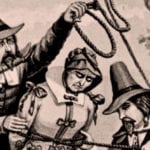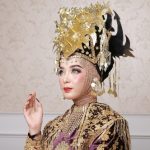 Politics
Politics  Politics
Politics  Weird Stuff
Weird Stuff 10 Eggs-traordinarily Odd Eggs
 History
History 10 Desperate Last Stands That Ended in Victory
 Animals
Animals Ten Times It Rained Animals (Yes, Animals)
 Mysteries
Mysteries 10 Devastating Missing Child Cases That Remain Unsolved
 Creepy
Creepy 10 Scary Tales from the Middle Ages That’ll Keep You up at Night
 Humans
Humans 10 One-of-a-kind People the World Said Goodbye to in July 2024
 Movies and TV
Movies and TV 10 Holiday Movies Released at Odd Times of the Year
 Politics
Politics 10 Countries Where Religion and Politics Are Inseparable
 Weird Stuff
Weird Stuff 10 Freaky Times When Famous Body Parts Were Stolen
 Politics
Politics The 10 Most Bizarre Presidential Elections in Human History
 Weird Stuff
Weird Stuff 10 Eggs-traordinarily Odd Eggs
 History
History 10 Desperate Last Stands That Ended in Victory
Who's Behind Listverse?

Jamie Frater
Head Editor
Jamie founded Listverse due to an insatiable desire to share fascinating, obscure, and bizarre facts. He has been a guest speaker on numerous national radio and television stations and is a five time published author.
More About Us Animals
Animals Ten Times It Rained Animals (Yes, Animals)
 Mysteries
Mysteries 10 Devastating Missing Child Cases That Remain Unsolved
 Creepy
Creepy 10 Scary Tales from the Middle Ages That’ll Keep You up at Night
 Humans
Humans 10 One-of-a-kind People the World Said Goodbye to in July 2024
 Movies and TV
Movies and TV 10 Holiday Movies Released at Odd Times of the Year
 Politics
Politics 10 Countries Where Religion and Politics Are Inseparable
 Weird Stuff
Weird Stuff 10 Freaky Times When Famous Body Parts Were Stolen
10 Women Who Influenced the Manly Ernest Hemingway
Ernest Hemingway is one of the most legendary writers to come out of the twentieth century. His no-nonsense prose, acute observation, and Lost Generation skepticism concretize his novels as some of the best in American literature, but his celebrity reputation is perhaps even better well known.
The rough-and-tough writer was notorious for his machismo, upholding traditional masculinity through his boozing, fighting, hunting, fishing, and womanizing. While he may come across as a man’s man, it is impossible to disregard the deep and profound—and perhaps even ironic—influence the women in his life had on him, from birth until death.
Related: Top 10 Dark Inspirations for Great Britain’s Famous Writers
10 Grace Hall Hemingway
“My mother is an all-time American bitch. She would make a pack mule shoot himself,” wrote Ernest Hemingway about his mother, Grace Hall Hemingway.
Ernest was the second child of Grace and Dr. Clarence (Ed) Hemingway. He was born on a summer day outside Chicago, Illinois, and his mother lovingly wrote, “The sun shone brightly, and the Robins sang their sweetest songs to welcome the little stranger to this beautiful world.”
Grace was unlike many women of her generation and neighborhood. She originally had a promising career as an opera singer, but abandoned to return to Chicago to marry Ed. She never let anyone forget her former career, however, and continued to let her creativity flow. She taught music, wrote poetry and her own music, and painted. She even brought in more income than her husband, an obstetrician.
As a mother, she made it a point to expose her children to art, music, and travel. In fact, when each of her children turned eleven years old, she took them to Nantucket for a month of seafaring, history, and art. Sometimes, however, her influence over her children broached the extreme. For instance, when Ernest was a child, she dressed him in the same clothing as his elder sister, Marcelline, to pass them off as twins, among other eccentricities.
With such an artistic, progressive, dominant mother figure, how could a child become anything but a troubled novelist?
While we can never know how influential Grace was on her son, Hemingway’s third wife, Martha Gellhorn, wrote, “Deep in Ernest, due to his mother, going back to the indestructible first memories of childhood, was mistrust and fear of women.”[1]
9 Martha Gellhorn
Martha was Hemingway’s third wife. Professionally, she and her husband were well matched, as she, too, was a successful journalist, war correspondent, and novelist. While they seemed perfectly suited in their love of travel and dedication to their careers, it was these similarities that perhaps drove them apart and challenged Hemingway more than any other marriage.
At the time of their meeting, Hemingway’s marriage to his second wife was coming to an end, and Gellhorn and Hemingway complimented one another. Between both of their work as journalists, as well as his publication of For Whom the Bell Tolls, they were what today’s culture could call a “power couple.”
That is until her career began to outshine his.
Tension had already begun to grow between them as she covered stories around the world, leaving Hemingway at home for weeks or months at a time. He once wrote to her, “Are you a war correspondent, or wife in my bed?”
She answered him by hopping on a ship to Omaha Beach the day after D-Day, leaving Hemingway and his insecurity at home. Perhaps that sense of insecurity is what pushed him onward to even better work.[2]
8 Gertrude Stein
One of the most well-known names of the Lost Generation is the stylish and eccentric writer and art collector Gertrude Stein. She is perhaps best recognized for hosting salons in the 1920s in Paris at which names like Picasso, Anderson, and Hemingway all attended at one point or another.
To have the patronage of Gertrude Stein was to be on your way to a respectable career in the arts. Her taste was highly respected in literary circles across the world, making her a very influential person. To have her read your novel for critiques or remark upon your art to a paying ear had the potential to change everything.
When Hemingway and his wife, Hadley Richardson, moved to Paris in the early 1920s, he sought out Stein. He was met with a strong and supportive, if not at times contentious, mentor. She helped connect Hemingway to fellow writers and hone his writing style. Ironically, their execution was very different.
Stein was known for her complex, “stream-of-consciousness” style, while Hemingway is famous for his straightforward, simple prose. Despite these differences and their later disagreement over his novel The Sun Also Rises, Hemingway’s name may not be nearly as well-known if not for the launch pad that was Gertrude Stein’s helping hand.[3]
7 Hadley Richardson
Hadley Richardson was Hemingway’s first wife, the woman who was by his side as he pursued his career overseas in Paris. The couple met in Chicago and eventually married in Bay Township, Michigan, in September 1921. Months later, the couple moved to Paris, where they would live off and on for the next several years. Their time in Paris, including their travels, fraternization with fellow expatriates, the birth of their son, and Hemingway’s infidelity, would become the inspiration for his posthumously published memoir, A Moveable Feast.
Her influence does not only extend to that single piece of work. In many ways, she remained a ghost by his side his entire life, with Hemingway writing, “I wished I had died before I ever loved anyone but her.” To look deeply into their relationship, in a fashion, she was a mirror of his own darkness, having herself written, “I know how it feels cause I have so very many times wanted to go and couldn’t on account of the mess it’d leave some other people in.”
Further, while it is well-known that Hemingway died of suicide, it is perhaps less well-known that, fifty or so years prior, a young Hadley Richardson had contemplated her own suicide while attending college at Bryn Mawr. In Paris, she was a rock, ever by his side, even as his affair with editor Pauline Pfieffer took place. She was by his side in Pamplona, where he gained his inspiration for his novel The Sun Also Rises. She bore his first child and was one of the last to speak with him before he died.
Hemingway scholars and historians consider Hadley to be Hemingway’s “favorite wife” or “greatest love,” the perfect woman for him, despite how turbulent his romantic life ended up becoming.[4]
6 Pauline Pfieffer
The young and fashionable journalist Pauline Pfieffer was Hemingway’s second wife and the first “mistress” in his string of four wives. Hemingway and his first wife, Hadley Richardson, met the Vogue editor while living in Paris. Initially, she was friends with Hadley, tagging along with her and Ernest on their numerous adventures across the continent, until eventually, her attraction to Ernest overpowered her friendship with his wife.
Pauline’s marriage to the famous writer was the second-longest, coming in at thirteen years. Over that time, despite the relationship’s eventual demise, Pauline contributed greatly to Ernest’s life and career. Aside from giving birth to two of his three children, she is the greatest editor Ernest had ever worked with, according to him. In addition, her family’s wealth provided for their home and adventures that later fueled so much of Hemingway’s writing.[5]
5 Sylvia Beach
Sylvia Beach was a facilitator of the success of the Lost Generation in 1920s Paris. The bookshop owner and publisher is famous for founding the iconic Shakespeare & Company on the Rue Dupuytren.
Her establishment served as a gathering place and publishing house for many of the expatriate writers in Paris at the time, including James Joyce, F. Scott Fitzgerald, and Ernest Hemingway. She specialized in American and English literature, helping to expose writers to a French market. She published their original works, including Joyce’s Ulysses, after being rejected by publishers in the United States and England.
Hemingway was quick to track down the literary hub, becoming a frequent visitor after only a week of being in Paris. Until the shop’s unfortunate closing in 1941 due to Nazi occupation, Hemingway remained in contact with Beach, exchanging letters and even stopping in sometimes to sign his books. In his memoir A Moveable Feast, Hemingway leaves no doubt that Beach and her progressive oasis were key to his success as an up-and-coming writer.[6]
4 Agnes Von Kurowsky
Agnes Von Kurowsky served in World War I as a Red Cross nurse but is remembered by history as the woman who first broke Ernest Hemingway’s heart.
When a young Hemingway was wounded by shrapnel while driving an ambulance during the First World War, he fell in love with his hospital nurse, the beautiful Von Kurowsky. This affair between nurse and patient, as brief as it was, inspired Hemingway in the many years to come, namely by influencing his novel A Farewell to Arms.
The character of Catherine Barkley is based on Von Kurowsky, and the hero, Frederic Henry, is a wounded American soldier, much like Hemingway in his own life. In the story, Catherine nurses Henry, and they eventually fall in love—again, much like Hemingway’s experience–but the tale does not have a happy ending, as Catherine dies in childbirth.
While Agnes and Ernest may not have had such a tragic end, his heart was broken nonetheless. He wrote, “I’ve loved Ag. She’s been my ideal… I forgot all about religion and everything else because I had Ag to worship.”[7]
3 Mary Duff Stirling Smurthwaite, Lady Twysden
Hemingway was known for basing his work on his real life. For Hemingway, art imitated life, not the other way around. At times, that philosophy landed him in trouble with friends and colleagues.
One such example was his novel The Sun Also Rises, Hemingway’s debut novel. It was based upon a trip he and a group of his fellow expatriates took to Pamplona, Spain. Hemingway went with his wife Hadley, a few gentlemen friends, and Lady Duff Twysden. Lady Twysden was going through a messy divorce and having affairs with a couple of said gentlemen’s friends in the traveling party.
What ensued among the bullfights and brunches was a flurry of insults, fights, sexual tension, sordid affairs, and too much alcohol. Hemingway, in the middle of it all and struggling with his first attempt at a novel, absorbed every moment and, in just six weeks, produced a first draft of The Sun Also Rises.
Many members of the party, including Lady Twysden, were not happy with Hemingway’s publication, claiming that it was hardly fiction at all but rather a pages-long gossip column. Lady Twysden and the posse even coined the terms “B.S.” and “A.S.” to stand for “Before Sun” and “After Sun” because of how much their lives changed after Hemingway’s stunt.
As much as they may not have liked the novel, the fact of the matter is that their lives as the Lost Generation were the perfect fodder to launch a timeless and remarkable literary career.[8]
2 Mary Welsh
Mary Welsh was Hemingway’s fourth and final wife. While she may not have been a riveting muse, like many women in his life, her influence over his life and legacy is no less significant. Much of the Hemingway history we have today can be attributed to her diligence in preserving his legacy in the years following his death.
She and Ernest spent the last 15 years of his life together, traveling to Cuba, Africa, Spain, and beyond, before finally settling in Ketchum, Idaho. During that time, he won the Nobel and Pulitzer Prizes for literature and survived two plane crashes. Through his literary success and declining mental and physical health, Mary was by his side.
She was also present in their home when he committed suicide on July 2, 1961, at the age of 61. Following his death, Mary stewarded his legacy through the publication of his famous memoir, A Moveable Feast, and donated many of his photographs and letters to the John F. Kennedy Library.[9]
1 Valerie Hemingway
Journalist, writer, secretary, protégée, and daughter-in-law Valerie Danby-Smith was a constant presence in the life of an aging Ernest Hemingway.
At 19 years old, she landed a job interviewing the prolific author in Spain with the publication she was working for. The pair instantly hit it off, with Ernest taking a keen interest in the whip-smart young lady who could hold her liquor and take a joke.
Eventually, he hired her as his personal secretary, a position that would prove critical to the posthumous publication of works like A Moveable Feast. She remained a part of his entourage until his death and continued to be a mainstay in the Hemingway family. She collaborated with Hemingway’s widow, Mary Welsh, to piece together his memoir and even married Hemingway’s son Gregory, whom she divorced later.
Valerie has certainly done the Hemingway name honor through her own work as a writer, journalist, speaker, and an overseer of the author’s legacy.[10]








